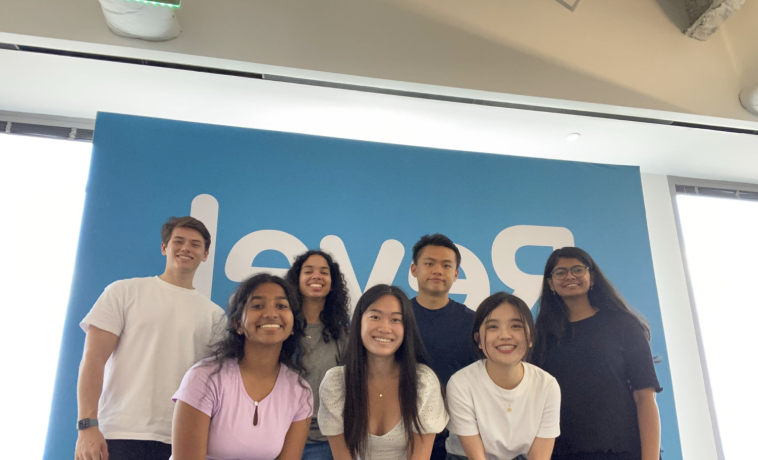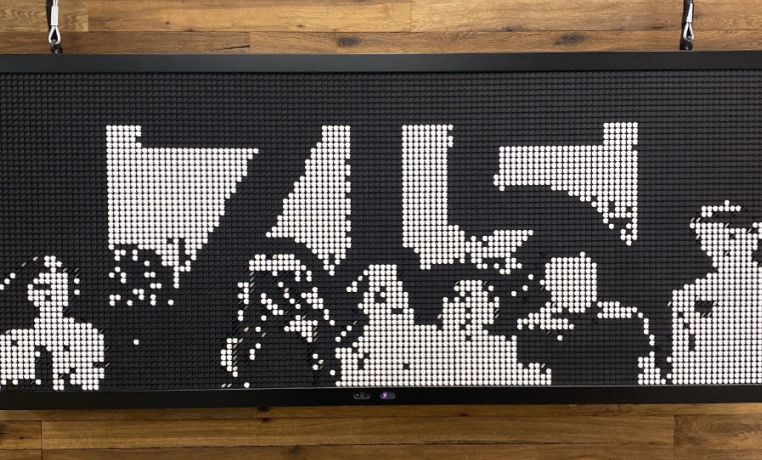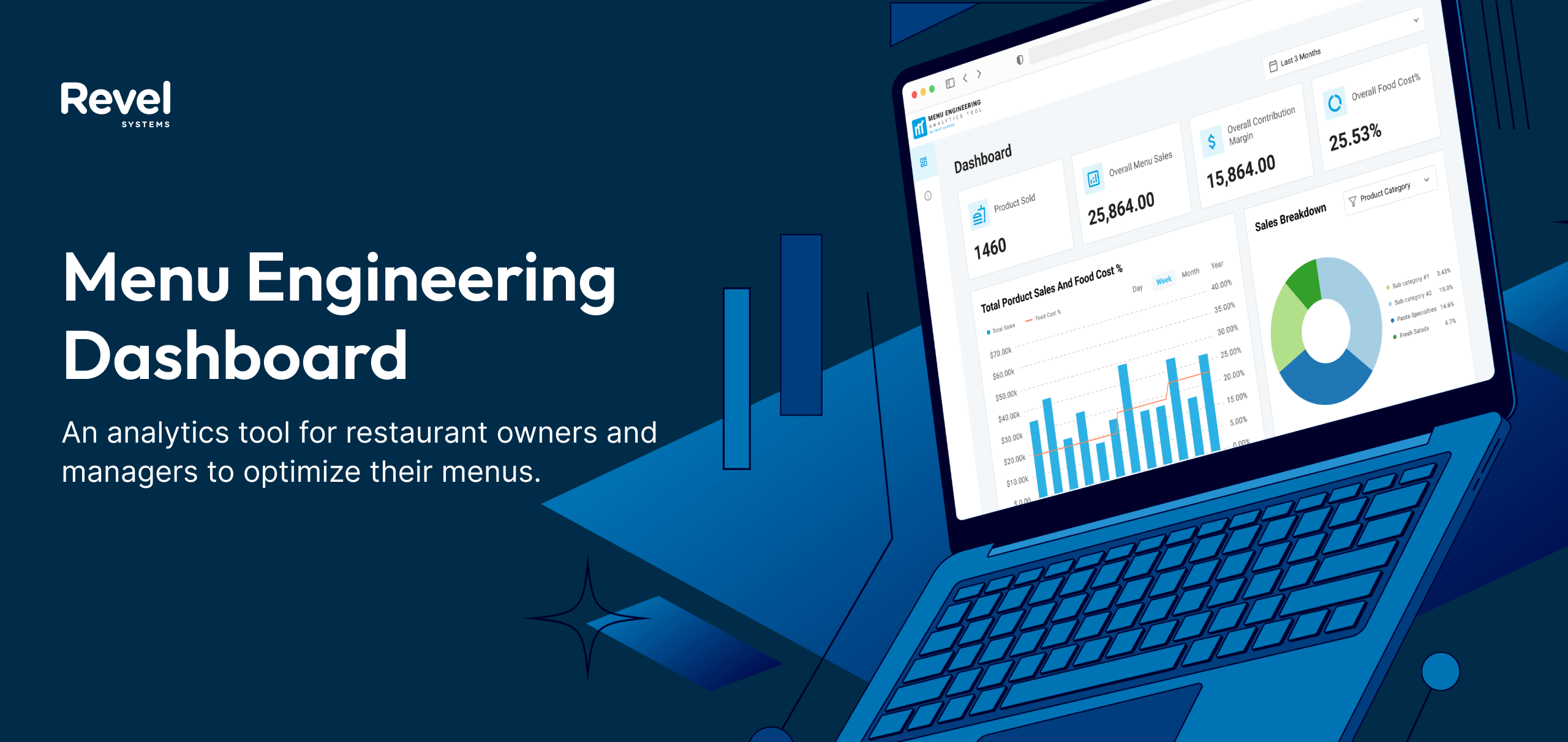
Team
Project Owner: Kavitha M
Scrum Master: Liah F
Developers: Kathy H, Tyler H, Keith T, Noaima B
My Role
Product Designer
Time
10 Weeks, Summer 2022
Tools
Pen and paper, Figma
Overview
Revel Systems is a software development company that builds open
cloud POS platforms to help businesses (restaurants and retail stores) improve efficiency
and increase revenue.
During my 10-week internship, I collaborated with a group of interns to create a Menu
Engineering Analytics Tool for restaurants to gain menu insights and boost revenue.
As the sole designer on the team, I conducted research, proposed solutions, and delivered
the designs at various levels of fidelity.
Hold on, what is Menu Engineering?
Menu Engineering is a technique restaurants use to analyze and
design menus for maximum profitability and customer satisfaction. It involves evaluating
each menu item's performance based on popularity and profit margin, and then categorizing
them into four groups:
🐴 Plow Horse: High Popularity, Low Profitability
⭐️ Star: High Popularity, High Profitability
🐶 Dog: Low Popularity, Low Profitability
🧩Puzzle: Low Popularity, High Profitability
Restaurants can then strategically adjust each category to optimize their menu.
According to Menu Cover Depot, ongoing menu engineering can potentially increase
restaurant profits by 10-15%.
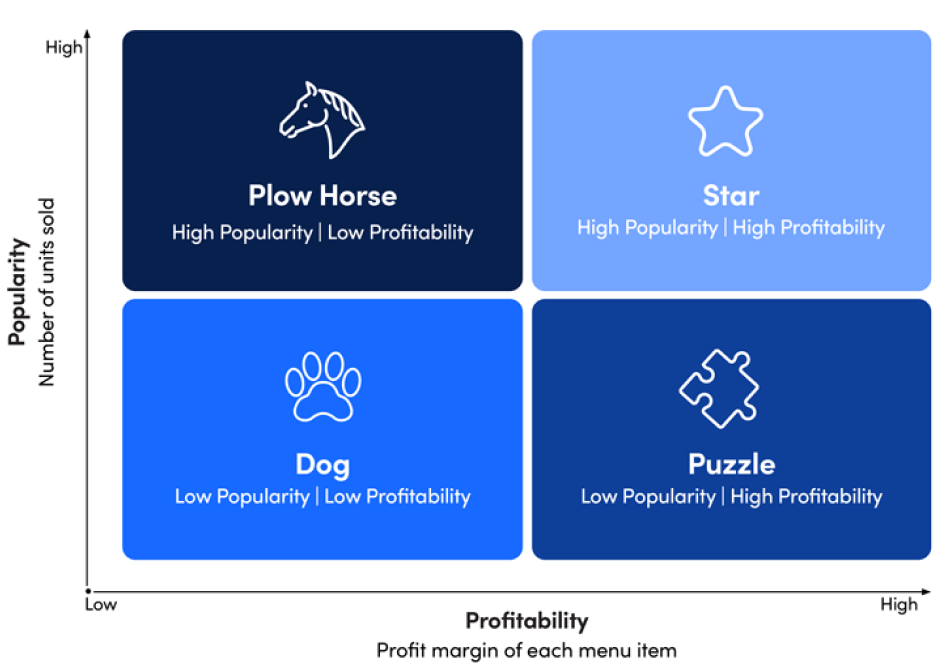
Product Demo 🌟
Before delving into the case study, I'd like to share a demo. I
created this video to showcase our product at our final presentation.
(Note: This video includes audio 🔈, so please adjust the volume accordingly:))
PROJECT GOAL
10 weeks before the presentation, our team were given a task:
Build a Menu engineering tool that helps designing a menu in a way that maximizes restaurant profit.
MY PROCESS
Start from designing for the end users
The project goal was broad with many possibilities. My approach began with research to understand the end user's needs. I then collaborated with the team to refine the goal and scope to ensure timely and high-quality delivery.
INITIAL RESEARCH
WHY and HOW to build
Competitive Analysis
Beginning with a competitive analysis, examining existing menu engineering tools in the market allows me to gauge the viability of building one and to see what is working versus what is not. Below are the main three types of solutions I found and their pros and cons.
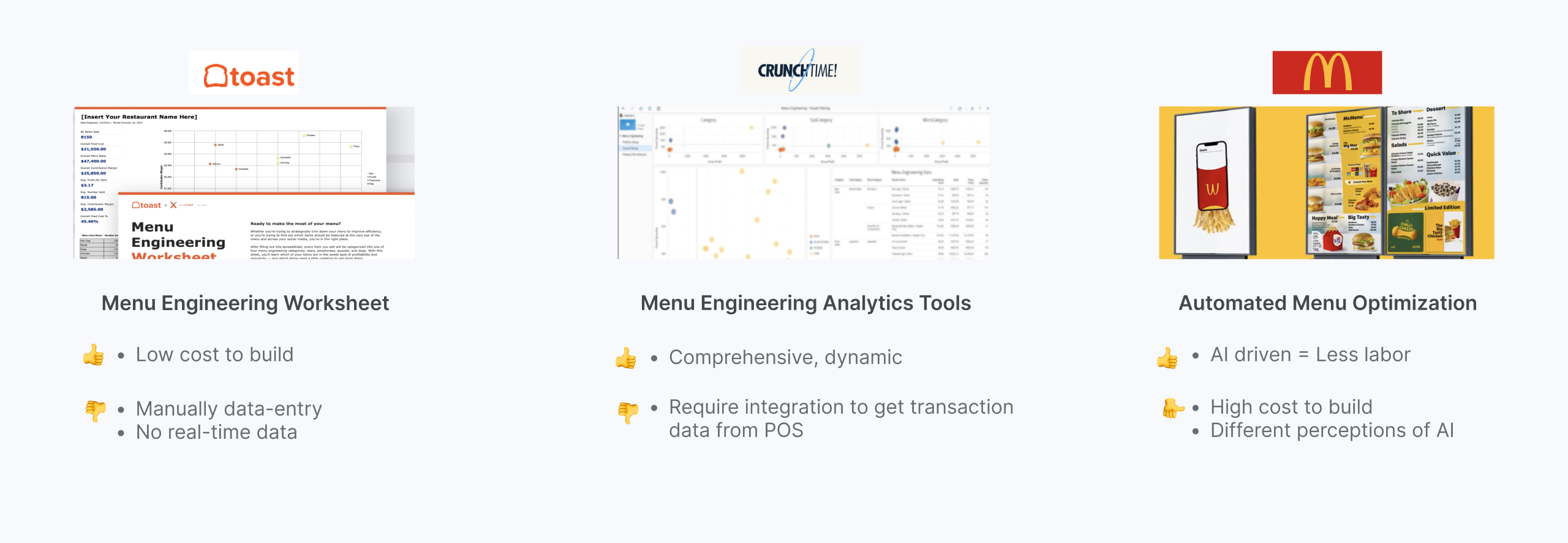
Key takeaways: Revel has an opportunity to develop a menu engineering tool. As a POS system, we possess all the necessary data for our customers to conduct menu engineering. Moreover, it has been proven effective and has been adopted by prominent brands in the market.
User Interview
While the competitive analysis suggested
our customers would find this product helpful, I wanted to validate this with our target
users and understand their current processes to tailor the solution to their needs. With
my mentor's assistance, I recruited seven participants, all of whom are restaurant
managers responsible for back-office menu management.
The research findings answered the research questions I established:
· Why or if we should build the product?
· How to build the menu engineering tool and what features we will need to solve the user's
problem?
THE PROBLEM
So, we should build this product because

USER NEEDS & DESIGN REQUIREMENTS
Our end users need:

DESIGN FOR REQUIREMENT#1
How should we display data to facilitate menu performance evaluation?
I gathered the common questions users have when evaluating menu performance during the research. Working with the PM, we compiled a list of menu level data points to address these questions. Product-level data and questions will be tackled at a later stage.

Challenge#1: how to display overall data to help user answer Q1 and Q2?
With a clear understanding of the data to display and the questions users seek answers to, I began brainstorming and experimenting with various ways to display. I then selected the most effective solution based on user feedback.
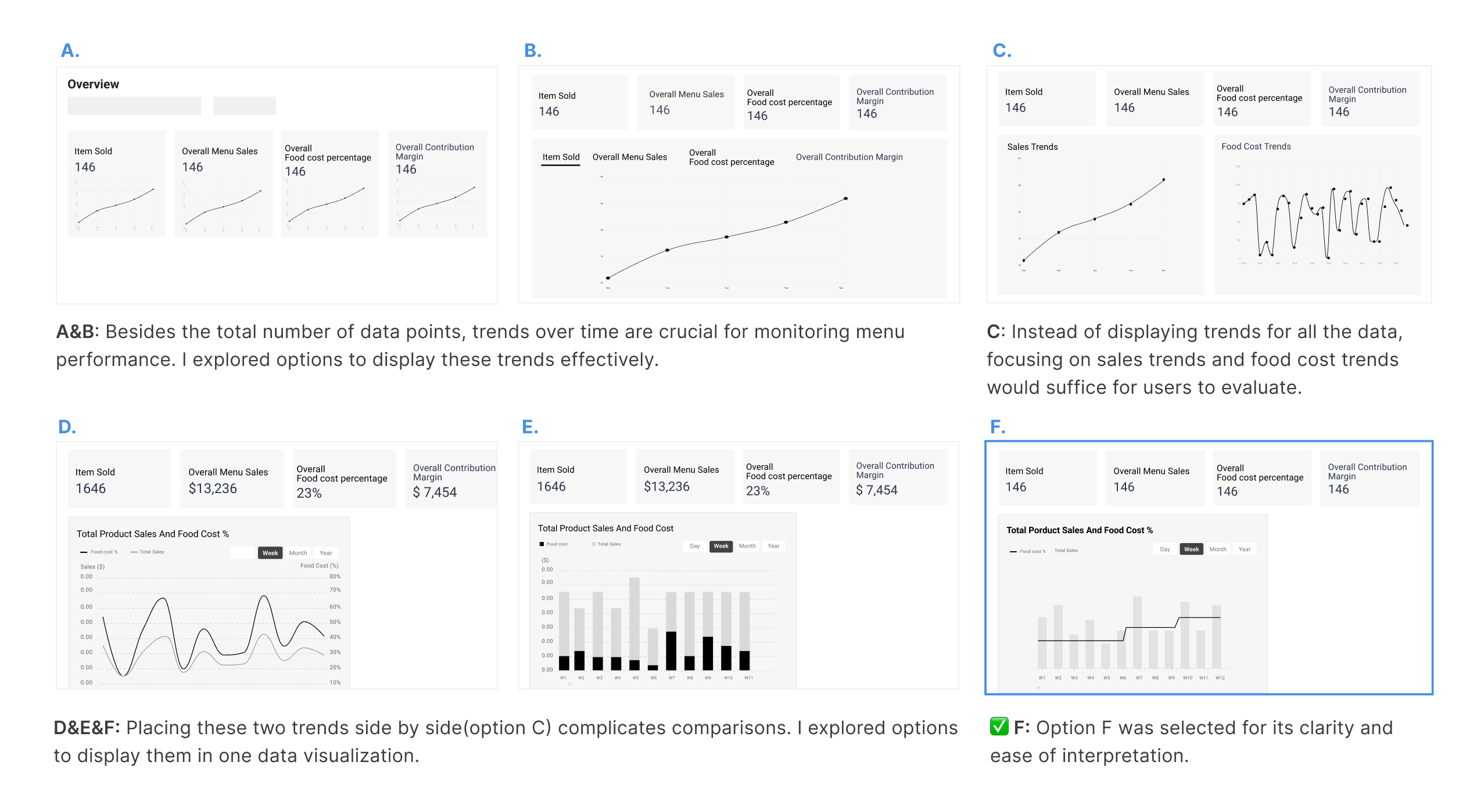
Final design to display overall menu performance data ⬇️
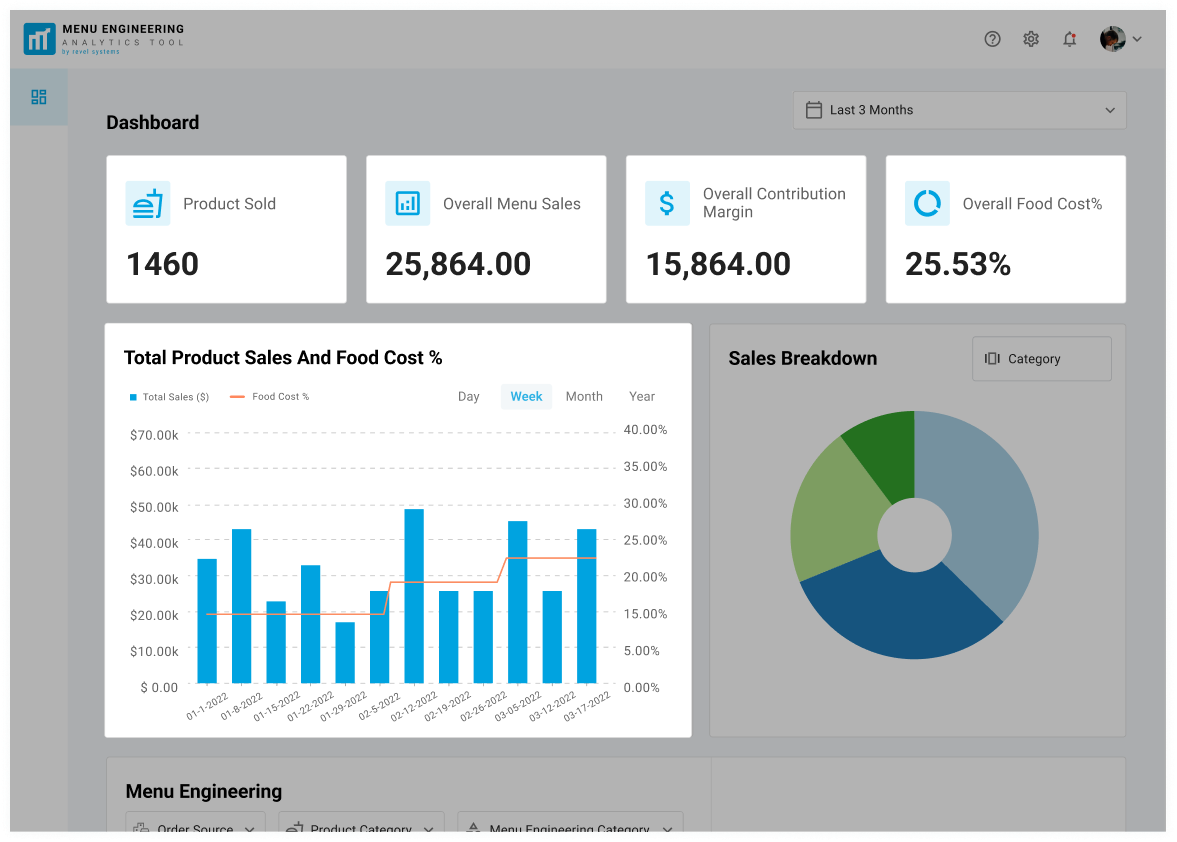
Default
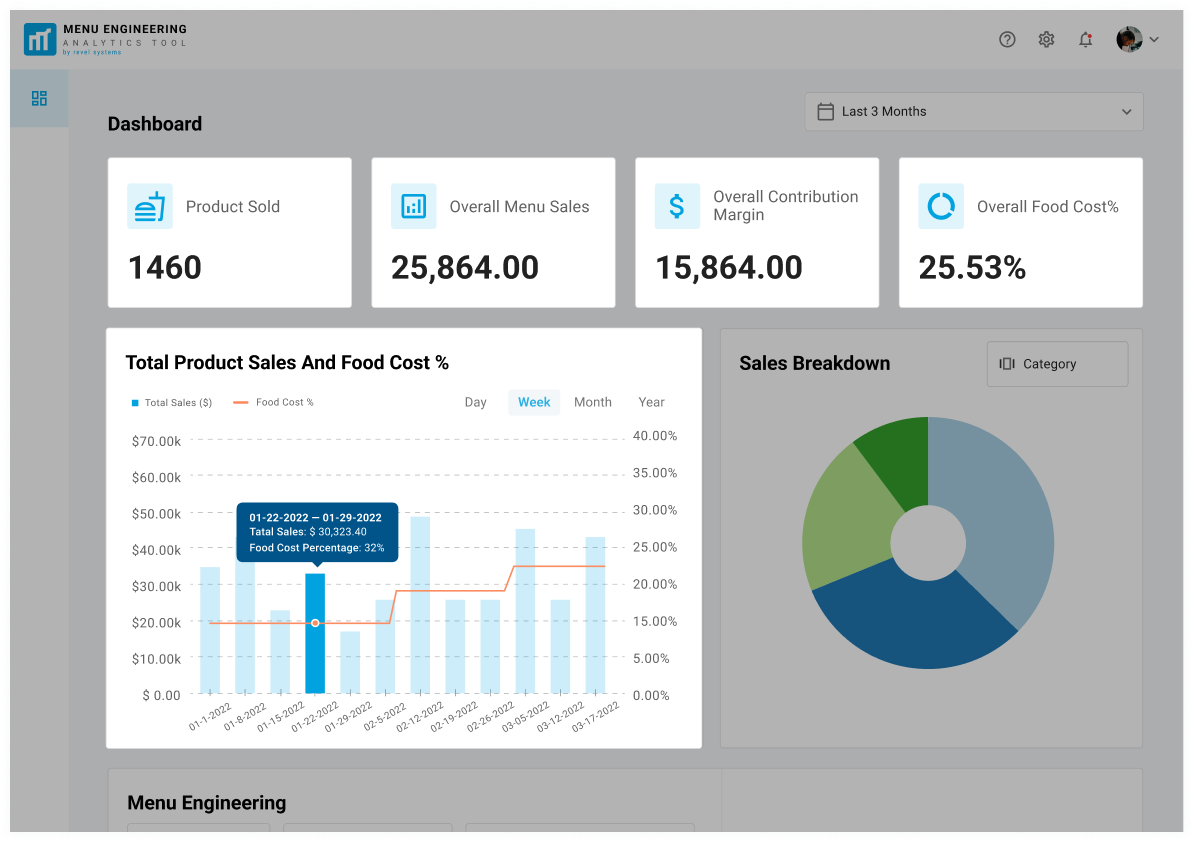
While Hovering
Challenge#2: how to display sales breakdown to help user answer Q3?
To address the Q3 "How do menu performances vary across different categories (e.g., appetizers and entrees) and order sources (e.g., in-store and delivery)?" users need an effective method to visualize sales breakdown by category and order sources.

Final design to display sales breakdown ⬇️
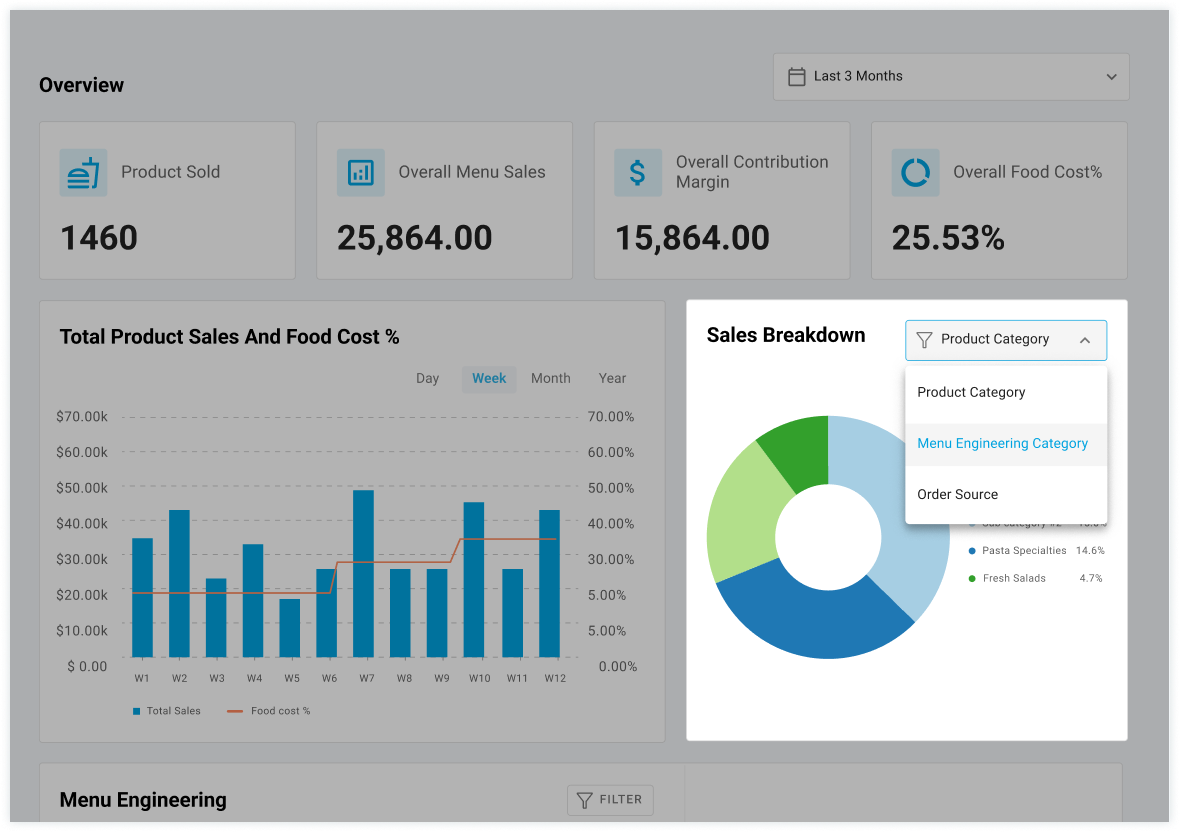
Breakdown by selected filter

While Hovering
DESIGN FOR REQUIREMENT#2
How might we offer insights for menu optimization?
After discussions with the PM, we selected the menu engineering analytics tool as the initial solution among the 3 options to take due to its feasibility and lower development costs.The other two directions require further research, particularly in establishing user trust in recommendations and addressing concerns users may have related to automated menu optimization.
📈 Menu engineering analytics tool
Analytics tool for users conduct menu engineering and make decisions based on menu engineering guidelines.
🧠 Recommendation system
A system that offers menu optimization recommendations for users, based menu engineering insights and historical data.
🤖 Automated menu optimization
A system that automatically optimizes menu design and pricing.
1st iteration to enable users to conduct menu engineering more effectively ⬇️
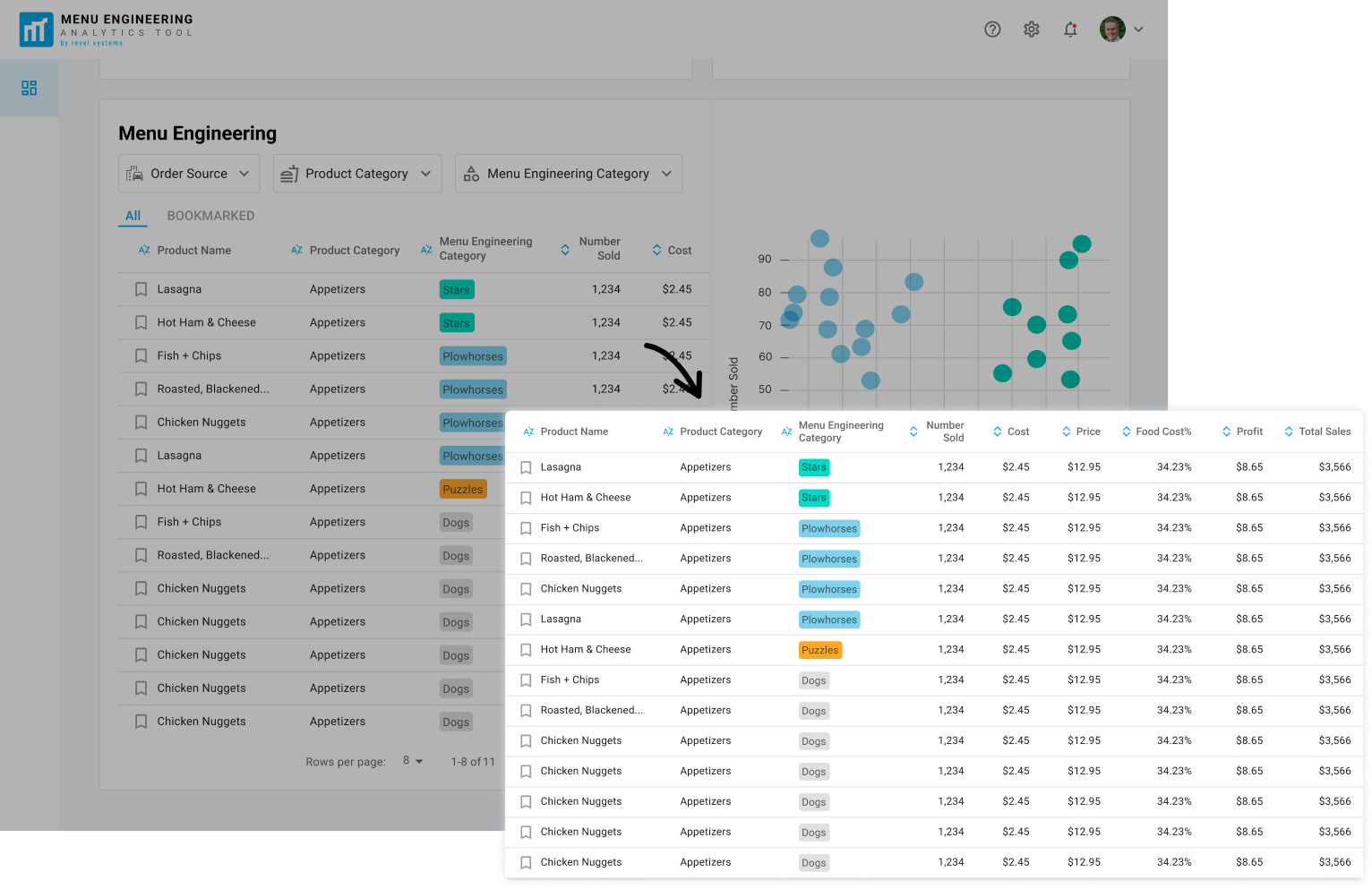
Menu engineering table
This table offers restaurant managers comprehensive data to evaluate the performance of each menu item.

Menu engineering Matrix
The matrix helps restaurant managers quickly identify which items are performing well and which may need adjustments or removal.

Bookmark items for easy access
Research has shown that users tend to check certain items more often than others when testing new products or considering removing unprofitable ones. Thus, this is why the "bookmark" feature comes into play.
2nd iteration of the menu engineering section : Pivoting the design to overcome technical challenges and ensure timely delivery. ⬇️
Before: I had the table and matrix view side by side, allowing users to hover over an item in the table view and see its corresponding location in the matrix view.
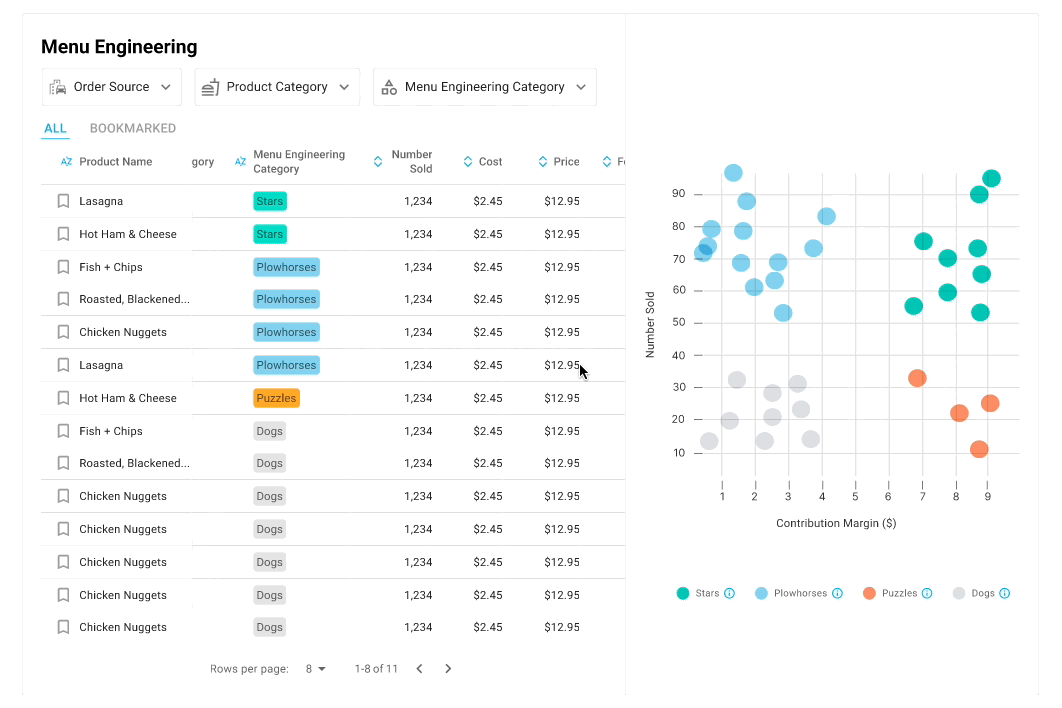

After: I decided to pivot the design to ensure
timely delivery without jeopardizing the user experience. Instead of placing the
table and matrix side by side, I separated them into two distinct views. The Matrix
view allows users to see the distribution of each menu engineering category at a high
level, while the Table view provides more detailed data.
I also gathered feedback from other designers and internal stakeholders, who agreed
this version would work better as it eliminates horizontal scrolling, and users don't
need to view the matrix all the time.
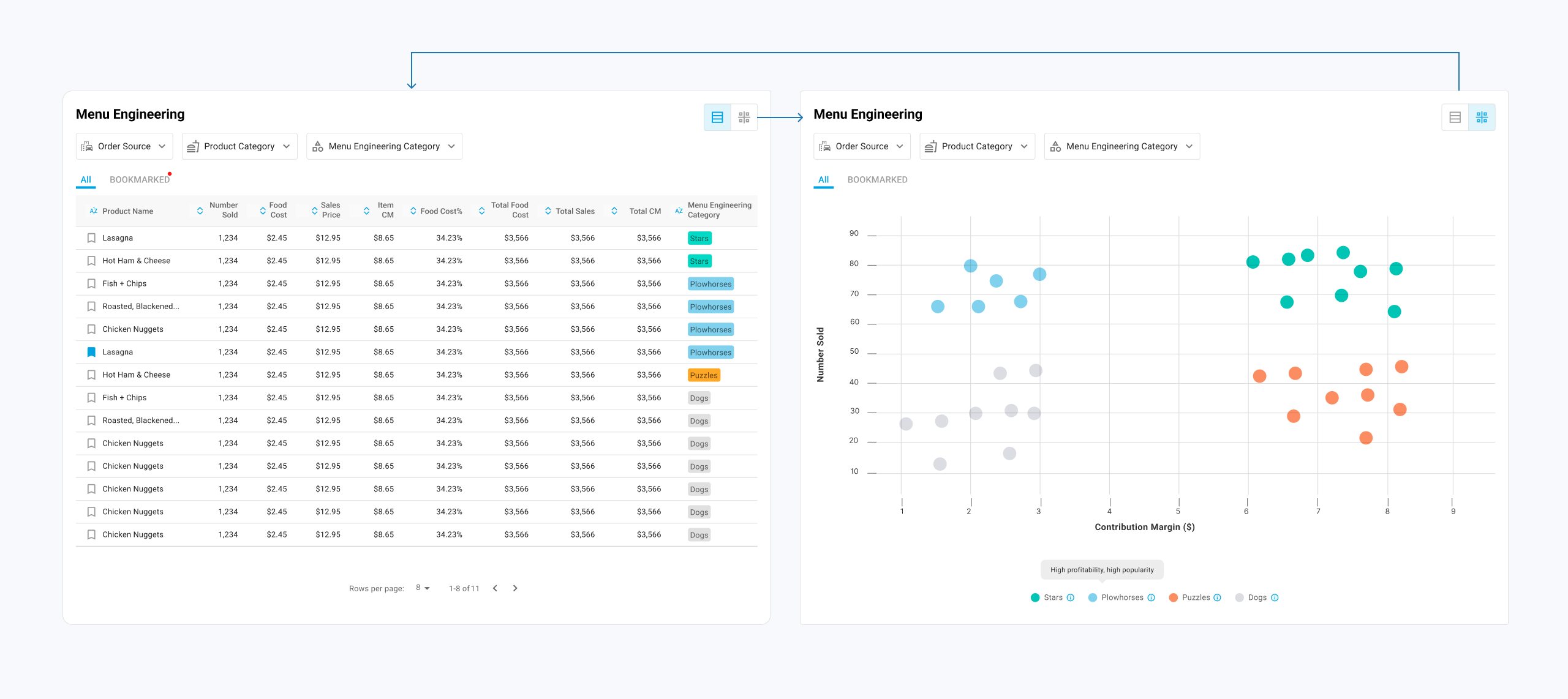
If I have more time, I would:
1. Conduct usability testing with real users. Unfortunately, due to
time and resource constraints, all validation work was done internally. Given more time,
I would certainly engage with real users.
2. Work on responsiveness on tablet and mobile
3. Continue the research and design work for the product detail page, which was deprioritized
for the MVP.
My key take-aways
Collaborated with a scrum team to deliver a product 👬
I learned how to conduct research and refine requirements within a short timeline, hand off design documents to engineers to minimize confusion, and manage situations when engineers encountered technical difficulties implementing the design. From my perspective, pivoting the design was not about 'compromise' but about 'collaboration.' As a team, we worked together to ensure that we delivered a technically feasible and user-friendly product.
Overcame the nerve-wracking feeling speaking to clients🧘♀️
I still recall the anxiety I felt during my initial interview with the CEO of a chain restaurant😥. I was afraid of saying something wrong and potentially losing their trust in our products. Thankfully, my mentor intervened and provided invaluable guidance. He encouraged me to overlook their title and perceive them only as interview participants. After all, they were here to help us collect information to better meet their needs. This mindset shift made me feel more confident in client meetings, which is essential in the B2B realm.
Shout out to my wonderful teammates and our mentors!

